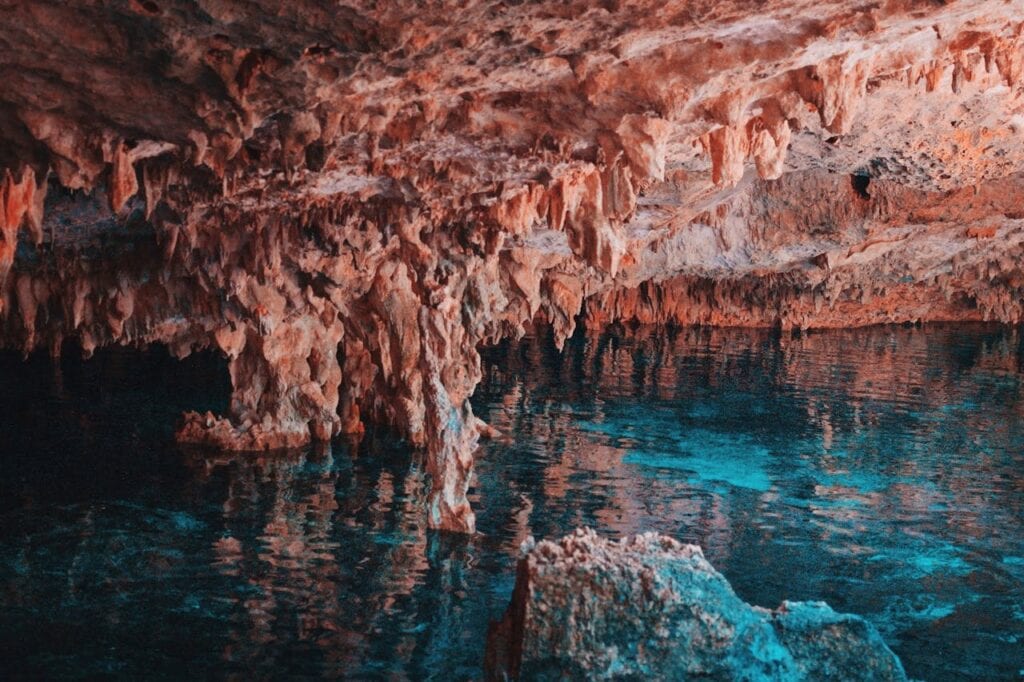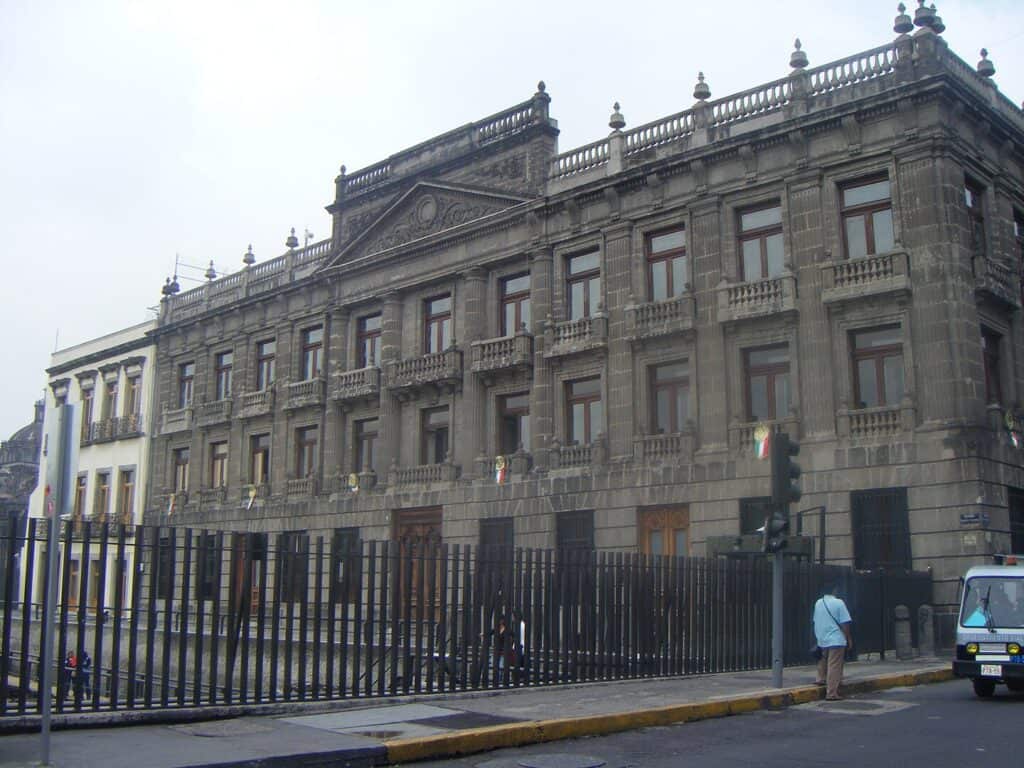We may earn money or products from the companies mentioned in this post. This means if you click on the link and purchase the item, I will receive a small commission at no extra cost to you ... you're just helping re-supply our family's travel fund.

Deep in the mountains of Guerrero, a caving expedition has uncovered one of Mexico’s most remarkable archaeological finds. Inside Tlayócoc Cave, explorers discovered a hidden chamber sealed for centuries, containing artifacts left behind by the ancient Tlacotepehua people. The discovery offers a rare glimpse into a civilization that vanished long ago, revealing how they worshipped, traded, and expressed their beliefs through art.
Russian speleologist Yekaterina Katiya Pavlova and Mexican cave guide Adrián Beltrán Dimas made the discovery while mapping the region’s underground passages. After surfacing through a flooded tunnel, they found a dry chamber where objects had been carefully arranged. Once reported, the Mexican National Institute of Anthropology and History, or INAH, secured the site and began formal excavation and preservation.
The Journey Beneath Guerrero’s Mountains
Tlayócoc Cave lies near the municipality of Leonardo Bravo, surrounded by pine and oak forests high in the Sierra Madre del Sur. Pavlova documented every detail of the journey, noting how the tunnel’s depth, water level, and natural formations hinted at ancient human use. Her maps later guided the INAH team during the first official exploration.
Archaeologists Cuauhtémoc Reyes Álvarez and Miguel Pérez Negrete, along with historian Guillermina Valente Ramírez, confirmed the chamber was not a random deposit. Objects had been deliberately placed and carefully preserved. Even the stalagmites had been shaped into rounded pedestals, likely to hold the offerings.
Despite the cave’s humidity, the arrangement remained intact. It became clear that no modern human had entered this space before. For researchers, it felt like opening a sealed story written in stone and shell.
When INAH completed the first inspection, they realized the discovery could redefine what is known about Guerrero’s prehistoric rituals. The cave was more than a geological wonder; it was a sacred archive of a vanished people.
The Hidden Chamber of Offerings
Inside the chamber, two engraved shell bracelets were found resting on natural rock columns. A third, broken piece, a giant marine snail shell, and several small black stone discs surrounded them. Each item appeared positioned with intention, forming a small but powerful altar deep underground.
When archaeologists examined the floor, they discovered three more stone discs buried beneath a thin layer of sediment. Their symmetrical placement suggested repeated use over time. The combination of ocean shells and mountain stone revealed how ancient societies linked distant elements of nature in their rituals.
Cataloging Fourteen Artifacts Frozen in Time
In total, researchers recorded fourteen artifacts: three complete bracelets, one fragment, a large snail shell, charred wood, and eight polished black stone discs. Each disc was about nine and a half centimeters wide, with small drilled holes suggesting they were hung or rotated during ceremonies.
The bracelets were crafted from Triplofusus giganteus shells, a marine species native to the tropical coasts of Mexico. This proved the Tlacotepehua people traded across long distances. Under close examination, the bracelets revealed delicate engravings of S-shaped xonecuilli patterns and small human faces.
Pavlova provided INAH with her complete photo archive and 3D mapping records so the chamber could be studied without physical interference. These visual references now serve as the primary guide for ongoing research and reconstruction.
Insights into Tlacotepehua Culture
Archaeologist Miguel Pérez described the find as a rare closed context, meaning it had remained untouched since its original use. Because nothing had been moved or stolen, researchers could interpret how the Tlacotepehua viewed caves as sacred spaces tied to creation, fertility, and rebirth.
Cuauhtémoc Reyes emphasized that the chamber symbolized the meeting of earth, water, and life. Dating between 950 and 1521 AD, the artifacts belong to the Postclassic era, when the Guerrero highlands were home to vibrant and interconnected communities. The Tlacotepehua left no written language, but their art speaks clearly of their spiritual and social world.
Symbolism and Cross-Regional Parallels
The xonecuilli motif found on the bracelets symbolizes cosmic movement and duality. Similar designs have been found at Infiernillo in Coahuayutla and in the distant Huasteca region, linking Guerrero’s ancient culture to broader Mesoamerican beliefs. The parallels suggest that these mountain societies were part of a larger network of trade and ritual exchange.
Some of the black discs may have been used as ceremonial instruments, creating rhythm through sound or light reflection. Others might have represented celestial objects, marking the cycles of the moon or stars. The placement of the artifacts inside a living cave reinforced their role in connecting humans with the natural forces they worshipped.
Modern Connections in Carrizal de Bravo

The nearest modern community, Carrizal de Bravo, sits nearly 2,400 meters above sea level. Its residents, descended from Nahua herders known as chiveros, have long told stories about deep hollows and whispering mountains. Until now, they did not know those tales referred to real ancient sites nearby.
INAH’s visit was the first formal collaboration with the community. Plans are underway to establish preservation programs and workshops so locals can participate in protecting their cultural heritage. The people of Carrizal de Bravo are now becoming active stewards of a history once hidden beneath their feet.
Preservation and the Path Ahead

The INAH Guerrero Center’s Restoration Department is analyzing the shell and stone artifacts to understand how they were carved, used, and preserved. Researchers are studying pigment traces, microscopic tool marks, and signs of water exposure to learn more about their age and origin.
By combining archaeology with community involvement, the Tlayócoc Cave project aims to protect both material and cultural history. The discovery is more than a scientific achievement; it is a reminder that even in the quietest corners of the mountains, voices from the past still wait to be heard.